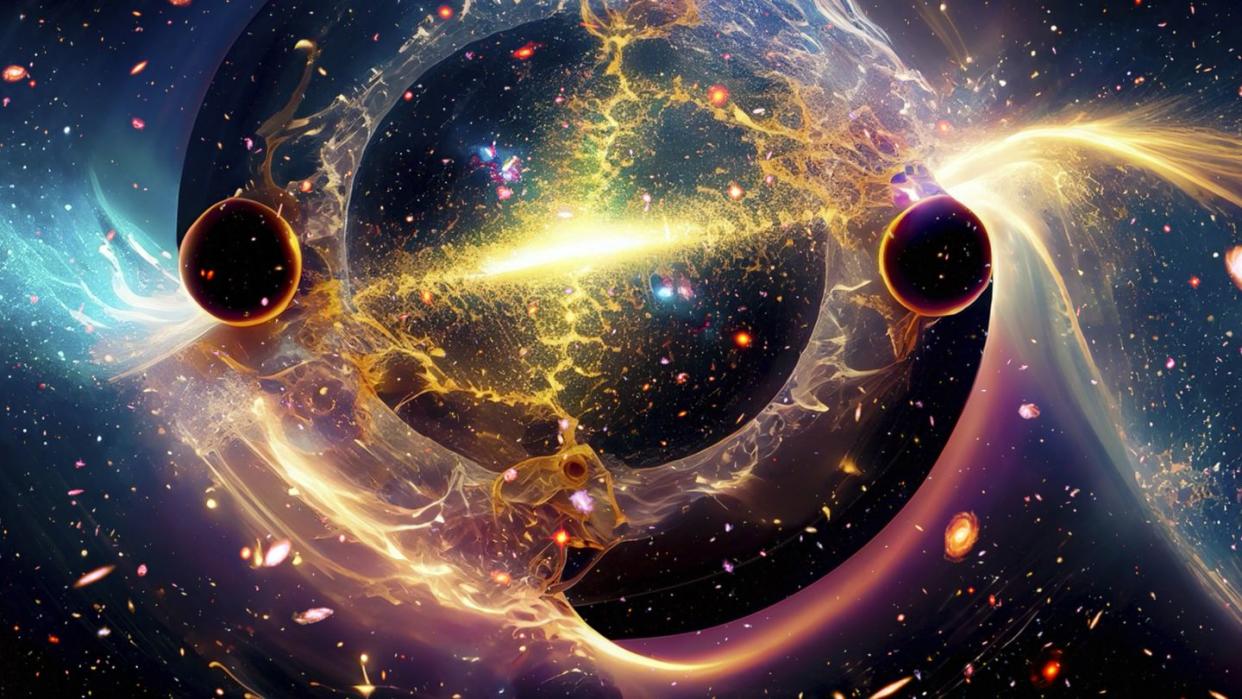Scientists Found a Startling Glitch in Einstein’s Theory of Relativity

- Oops!Something went wrong.Please try again later.
For more than a century, Albert Einstein’s General Theory of Relativity has provided a surprisingly accurate framework for understanding the gravitational machinations of the universe.
However, when observing data approaching the “superhorizon,” galaxies traveling so fast they approach the speed of light, inconsistencies have shown that they theory might need a cosmological extension of sorts.
A new paper suggests that there’s a ‘cosmic glitch’ in Einstein’s theory that, once addressed, helps solve for some of the gravitational wonkiness occurring at large, universe-spanning scales.
When it comes to cosmological scales, Earth is just a speck among a vast ocean of supermassive black holes, ultra-dense neutron stars, and explosive supernovae along with other celestial phenomena we can only theorize. Despite this cosmic insignificance, one intelligent life form living on the third planet of our particular solar system amazingly discovered many of the vast secrets of the universe.
Neatly packed in his General Theory of Relativity, Albert Einstein and his world-changing theory has accurately predicted many of the cosmological phenomena we’ve glimpsed in the century since its publication, including most recently the 2019 images of M87—a supermassive black hole that closely resembled Einstein’s predictions.
However, the theory isn’t perfect, and one area where the physics behind Einstein’s theory begins to break down is when science approaches the “superhorizon,” or the maximum distance light has traveled since the beginning of the universe. Inconsistencies with Einstein’s ideas have led some to believe there is a “cosmic glitch” in the theory, and now scientists from the University of Waterloo and the University of British Columbia have formulated an “extension” of Einstein’s formulas to account for these cosmic-sized inconsistencies. The results of those efforts, which have stretched on for at least 20 years, were published in March in the Journal of Cosmology and Astroparticle Physics.
“When we try to understand gravity on a cosmic scale, at the scale of galaxy clusters and beyond, we encounter apparent inconsistencies with the predictions of general relativity,” Robin Wren, University of Waterloo graduate and lead author on the study, said in a press statement. “It’s almost as if gravity itself stops perfectly matching Einstein’s theory…gravity becomes around one per cent weaker when dealing with distances in the billions of light years.”
Many have tried to challenge the astrophysical giant that is Einstein’s Theory of General Relativity, which has survived more than a century of immense scrutiny and scientific exploration and emerged largely unscathed, and none have faired very well. Instead, the researchers refer to their work as a kind of “footnote” to Einstein’s original work, meaning the theory is still our best bet at understanding our universe, but that it needs slight tweaking when dealing with far-flung galaxies traveling near the speed of light.
When the researchers looked at modern data from observations of the Cosmic Microwave Background (CMB), the primeval radiation emitted shortly after the Big Bang, the results appeared to favor the theory of a one percent glitch when dealing with gravitational constant on large, cosmic scales. Also, including this “cosmic glitch” also came with a few other observational benefits.
“It’s not just that we found in Cosmic Microwave Background observations, it also makes most of the tensions much milder,” University of Waterloo’s Niayesh Afshordi, a co-author of the study, said in a recent interview posted on YouTube. “In particular, the rate of expansion of the universe becomes more comparable to what’s observed from local measurements [the Hubble tension] and structure formation, basically how many structures we have in the universe [the S8 tension], it becomes more consistent with Cosmic Microwave Background and other galaxy observations that we have.”
The researchers say that future observations of the CMB will help elucidate whether this glitch could help explain some of the unsolved mysteries of the universe. But if Einstein, or even the 17th century discoveries of Isaac Newton, the mind behind the previous gravitational framework (before being superseded by general relativity), are any indication, these cosmological answers will only spawn more new and exciting questions.
And the enlighten residents living on this lonesome spec in a vast cosmos will likely need to dream up new footnotes, extensions, and perhaps even new theories to explain the grand mysteries that surround us.
You Might Also Like

